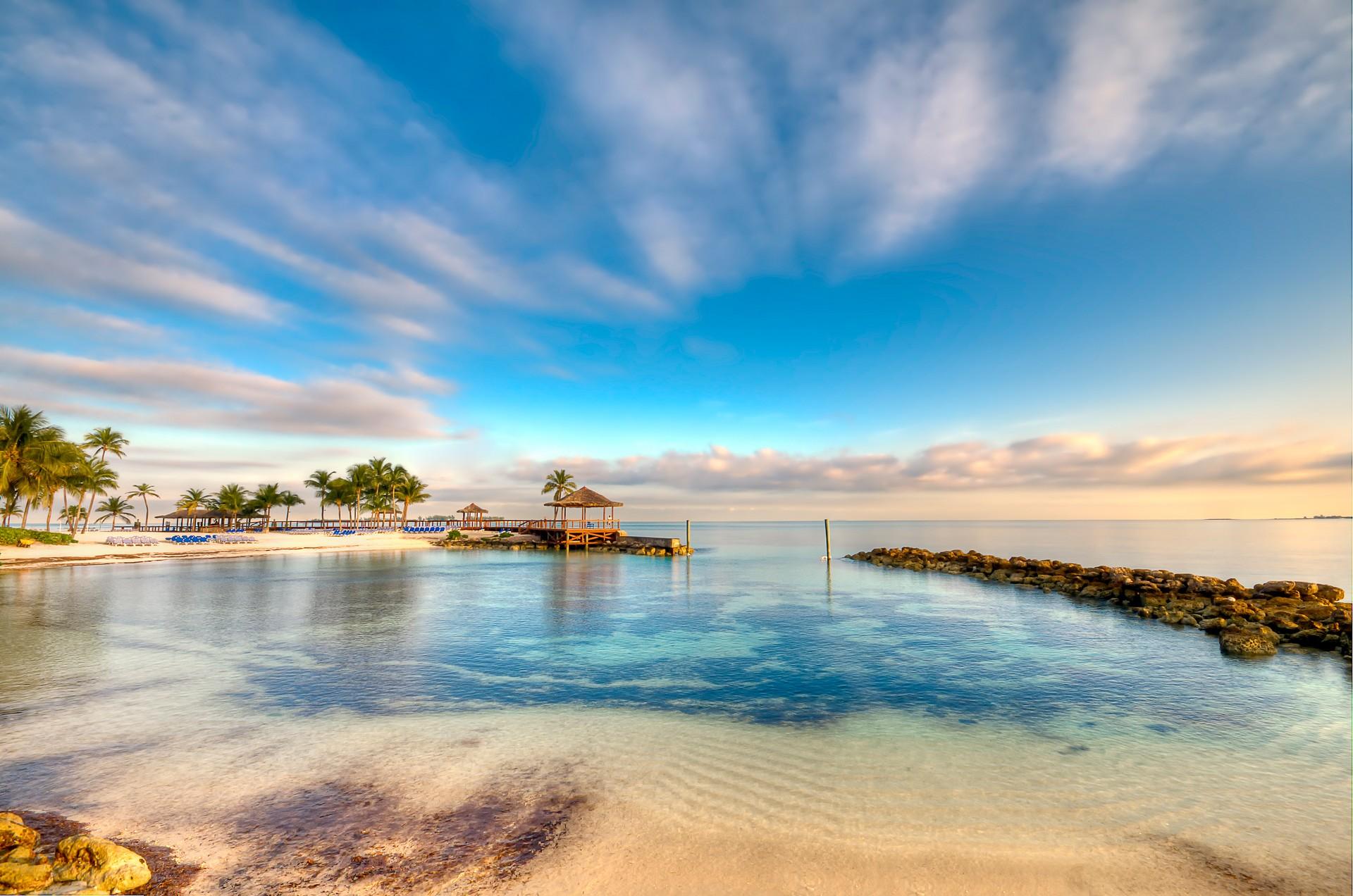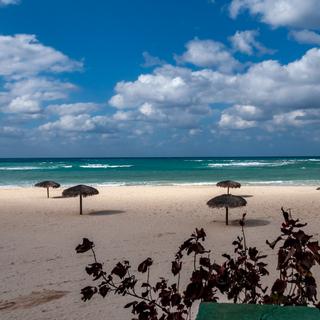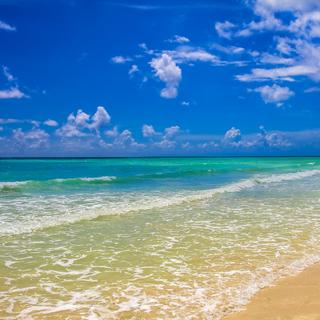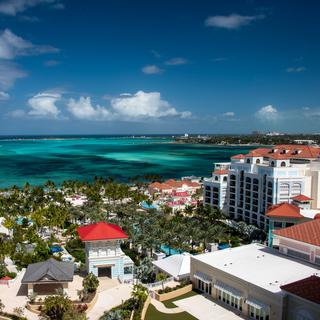
Long Island weather and climate in 2025

Long Island weather and climate in 2025
Day
32 °C
Night
26 °C
Sea
28 °C
Precipitation
53 mm
in month
Rainy days
11 days
in month
Daylight
13 hours
average
Sunshine
8 hours
average
Humidity
79 %
Weather charts for Long Island
Find more destinations like this
Destinations with similar weather to Long Island
Other destinations in Bahamas
Closest cities for Long Island
Weather overview for Long Island
Weather overview
The tropical environment of Long Island in the Bahamas offers a range of weather conditions throughout the year, with balmy day temperatures averaging between 25 °C (77 °F) in the cooler months and reaching up to 32 °C (90 °F) during the peak of summer. The weather pattern shows a distinct dry season with minimal rainfall, particularly in March, when Long Island sees only about 6 days of precipitation. On the other hand, October is known for its highest frequency of rainy days at approximately 13 days. The ocean around Long Island reaches its warmest sea temperatures in September, peaking at 29 °C (84 °F), while the coolest marine conditions are observed in February with 25 °C (77 °F). Nighttime on the island ranges from its lowest at 20 °C (68 °F) in January to the warmest nights in July, averaging 26 °C (79 °F). Relative humidity typically peaks in January, with levels reaching up to 81 %, and while sunlight hours begin to increase from January onward, averaging 7 hours to 8 hours during the sunniest month of July.
January weather
In Long Island, the day temperature reaches its lowest average in January while the sea temperature continues to fall, reaching 25 °C (78 °F). The impending dry season is approaching. The start of an increase in sunshine hours is noted this month, free from cloud cover. The lowest night temperatures can be seen, with an average value of 20 °C (68 °F). Humidity climaxes, topping out at 81 %.
February weather
Long Island sees its lowest marine temperatures in February, averaging 25 °C (77 °F), while land temperatures gently increase to an average of 26 °C (79 °F). The quantity of precipitation declines, averaging 31 mm (1.21 in), and a decrease in rainy days begins to manifest with approximately 6 days. An uptick in sunlight hours continues, roughly matching the previous month at 7 hours. A slight rise in night temperatures is observed, resting at an average of 21 °C (69 °F).
March weather
The occurrence of rainy days in Long Island bottoms out in March, recorded at roughly 6 days. The precursor to peak dry season, this month experiences a continued rise in night temperatures, averaging 21 °C (71 °F). Day temperatures consistently elevate, reaching 28 °C (82 °F), alongside an increase in sunlit hours peaking at 8 hours.
April weather
An increase in daytime temperatures becomes noticeable in April, with an average of 28 °C (83 °F) in Long Island, as does the beginning of a rise in sea temperatures. The initiation of upward rainfall trends is apparent with an average of 44 mm (1.75 in). Continued growth in sunlight hours is observed, set at 8 hours, as humidity reaches a seasonal low, stabilizing at 78 %. Night temperatures keep on their upward trajectory, now averaging 23 °C (73 °F).
May weather
Long Island witnesses an upward trend in its day temperature, which settles at an average of 30 °C (85 °F). Concurrently, the sea temperature progresses to 27 °C (80 °F). The count of rainy days begins to escalate, documented at about 10 days, and an increase in precipitation is marked. The night climate continues to warm, registering 24 °C (74 °F). The initial decline in cloud-free sunlight hours is spotted, recorded at 7 hours.
June weather
In June, a sustained rise in both sea and day temperatures is evident in Long Island, with the sea temperatures around 28 °C (82 °F) and day temperatures at 31 °C (88 °F). The increase in the number of rainy days is also apparent, with figures at about 11 days. Night temperatures continue to climb, noted at 25 °C (77 °F). The lowest wind speed of the year is marked in June, while the longest days are also experienced.
July weather
July in Long Island is characterized by day temperatures reaching a plateau at roughly 32 °C (89 °F) and a noticeable rise in sea temperatures at about 28 °C (83 °F). The decrease in rainfall amounts starts to become visible in this month. Night temperatures hit their peak, with the most sunlight hours also occurring in July.
August weather
The zenith of day temperatures is observed in August, averaging 32 °C (90 °F) in Long Island. The onset of increased rainy days and precipitation is seen, recorded at 12 days and 72 mm (2.83 in).
September weather
September's sea temperature in Long Island hits its highest at 29 °C (84 °F), and a downward trend in night temperatures begins. The rise in the amount of rain and the frequency of rainy days continues. A decrease in cloud-free sunlight hours starts, now at about 7 hours.
October weather
As Long Island enters October, a gradual drop in day temperatures is noted, averaging 30 °C (86 °F), and a similar trend is seen in sea temperatures, which are at approximately 28 °C (83 °F). The apex of yearly rainfall is reached, with an impressive 154 mm (6.05 in), and the pinnacle of rainy days is observed, sitting at 13 days. The continuing dip in night temperatures is recorded, with average figures of 24 °C (75 °F).
November weather
The downward adjustment in Long Island's day temperatures continues in November, now at 28 °C (83 °F), with the sea temperature also following a similar pattern, registering 27 °C (81 °F). The commencement of reduced rainy days is evident, tallying at 9 days, along with a contraction in rainfall, marked at 77 mm (3.02 in). Night temperatures encroach lower, average out at 23 °C (73 °F). The wind speed reaches its maximum during the month, and declining daylight hours further verify the change in season.
December weather
December sees a continued decline in day temperatures in Long Island, now at an average of 27 °C (81 °F), with a concurrent diminishing trend in sea temperatures, posting at 26 °C (79 °F). The reduction in rainfall amount is also present, noting 48 mm (1.90 in), while the frequency of rainy days further decreases to 7 days. The night temperatures experience a similar downturn, coming in at 22 °C (71 °F). Sunlight hours reach their nadir for the year, documented at 6 hours.
FAQs
Would January be a suitable time for a vacation in Long Island?
January stands out as a prime time to visit Long Island, offering agreeable daytime warmth at approximately 25 °C (77 °F), comfortable sea temperatures around 25 °C (78 °F), and enjoyable nighttime coolness at 20 °C (68 °F). Expect minimal rainfall with just about 7 days of precipitation, so leaving your rain gear behind is often advisable.
How does the temperature vary throughout the day in Long Island during February?
In February, Long Island's daytime averages hold at about 26 °C (79 °F), making for a pleasant environment suited to outdoor activities. Remember to bring along summertime essentials as the heat may become quite intense under the full glare of the sun.
How warm does Long Island get in March?
March in Long Island features warm temperatures, typically averaging 28 °C (82 °F), while conditions remain comfortably welcoming.
Do April showers mark the start of the wet season in Long Island?
April does not signify the commencement of the wet season in Long Island; instead, expect a moderate 6 days of rainfall throughout the month.
Can I anticipate many rainy days in Long Island during May?
Expect approximately 10 days of rain in May within Long Island, signifying a transition with more frequent wet days.
Does June fall within the dry period on Long Island?
June is not considered part of the dry season in Long Island, and you should be prepared for rain on nearly 11 days during the month.
What are the wind conditions like during July in Long Island?
In Long Island, July brings moderate wind conditions, with average wind speeds around 6.
What amount of sunshine is typical in Long Island for the month of August?
Long Island in August enjoys plentiful sunshine, with daily averages near 8 hours.
What level of humidity should I expect in Long Island during September?
In September, expect Long Island's humidity to be relatively high, often exceeding 81 %.
How much does it typically rain in October in Long Island?
October brings the heaviest rainfall to Long Island, with total precipitation averaging a substantial 154 mm (6.05 in) and the highest count of wet days peaking at 13 days.
What are the typical nighttime air temperatures in Long Island during November?
Nightfall in November in Long Island comes with averages of 23 °C (73 °F), ideal for enjoying the island's nightlife or morning athletic pursuits.
Is the sea temperature in Long Island during December conducive for swimming?
December's sea temperatures in Long Island maintain a welcoming 26 °C (79 °F), suitable for extended periods of swimming and water activities.






